calsfoundation@cals.org
Prairie Grove Battlefield State Park
| Location: | Washington County |
| Size: | 840 acres |
Prairie Grove Battlefield State Park preserves the site of the Civil War Battle of Prairie Grove in northwest Arkansas. Established in 1908 as a park where old veterans held reunions, it became a state park to help visitors understand the battle and its place in Civil War history as well as how the war changed the lives of the civilians in the Arkansas Ozarks.
The Battle of Prairie Grove on December 7, 1862, was the last time two major armies of almost equal strength faced each other for supremacy in northwest Arkansas. The Confederate army withdrew from Prairie Grove on the night of December 7, leaving Missouri and northwest Arkansas in Federal hands.
The battle was actually named after the Prairie Grove Church, which was used as a hospital after the battle. The town of Prairie Grove was established in 1888, years after the battle.
In 1908, the United Daughters of the Confederacy (UDC) bought nine acres at the site to create a commemorative park. Annual veteran reunions at the park featured political speeches, dinner on the grounds, foot races, and carnival games, as well as a place for the aging soldiers to talk and reminisce. Following World War I, the reunions included the veterans of that conflict, too. Even during the Great Depression, the reunions continued with the last surviving Confederate veterans in the area attending the August, 1938, event. Afterwards, the ladies of the UDC discussed discontinuing the reunions. The Japanese attack on Pearl Harbor on the anniversary of the Prairie Grove Battle effectively ended the reunions. Following World War II, the park went through a new era of development under new leadership.
Citizens interested in the future of the park met in 1957 and established the Prairie Grove Battlefield Memorial Foundation, taking over operations at the park from the UDC. The foundation also sought the passage of Senate Bill 278 in 1957, creating a state-appointed Prairie Grove Battlefield Park Commission with a state appropriation of $50,000 for development. This money and future funding enabled the commission to purchase fifty additional acres and relocate several historic structures of the area to the park: the Morrow House, the Latta House, and a smokestack from nearby Rhea’s Mills.
A donation of $100,000 was bequeathed in 1965 from the estate of Biscoe Hindman, son of Major General Thomas C. Hindman, who commanded the Confederate troops at Prairie Grove. Architect Kenneth Cockram designed Hindman Hall and used the gift for the construction budget. The Prairie Grove Battlefield Park Commission dedicated the structure in 1965, which houses the park’s museum. The park was listed on the National Register of Historic Places on September 4, 1970.
Governor Dale Bumpers signed the legislation creating Prairie Grove Battlefield State Park in 1971, which allowed state funding for the staffing needs as well as other projects. The park continued to expand with the 1980 addition of the Borden House property east of the existing park, where some of the heaviest fighting occurred. This acquisition brought the park’s total acreage to 130, where it remained until a new effort to expand the park began in 1992. The United States government established the American Battlefield Protection Program to help private, local, and state efforts to preserve historic battlefields through federal funding and other assistance. The National Park Service worked with the Arkansas Department of Parks and Tourism and the Department of Arkansas Heritage in preparing a Battlefield Protection Plan for Prairie Grove in 1992. The result was that a mixture of state, federal, and private funds was used to purchase more land. Today, the park includes about 840 acres of the battlefield and provides even more than a reunion grounds for veterans. Ongoing archeological work in the twenty-first century has resulted in the discovery of the locations of six more structures that existed during the battle: the Morton House, the William Rogers House, the Hugh Rogers House, the Josiah Thompson House, the Ada Post Office, and the old Fayetteville–Cane Hill Road.
The park offers guided tours of the battlefield, interpretive exhibits in Hindman Hall, a walking trail, a five-mile driving tour, and a geocache tour. Visitors can watch videos about the battle and the Civil War in the park’s audio-visual room. The visitors’ center has a gift shop and bookstore. The park also contains pavilions, a picnic area, and a playground.
Special events at the park include a December reenactment of the battle, with a two-day schedule of activities; a yearly Memorial Day tribute; and the Prairie Grove Clothesline Fair over Labor Day weekend.
For additional information:
Arkansas State Parks–Prairie Grove Battlefield. http://www.arkansasstateparks.com/prairiegrovebattlefield/default.aspx (accessed March 20, 2021).
Bowden, Bill. “6 Civil War Structures Located.”Arkansas Democrat-Gazette, December 1, 2012, pp. 1B, 10B.
Montgomery, Don, ed. The Battle of Prairie Grove. Prairie Grove, AR: Prairie Grove Battlefield Historic State Park, 1996.
“Prairie Grove Battlefield Park.” National Register of Historic Places nomination form. On file at Arkansas Historic Preservation Program, Little Rock, Arkansas. Online at http://www.arkansaspreservation.com/National-Register-Listings/PDF/WA0452.nr.pdf (accessed March 20, 2021).
Sallee, Scott E. “The Battle of Prairie Grove: War in the Ozarks, April ‘62—January ‘63.” Blue & Gray Magazine 21 (Fall 2004): 6–23, 45–50.
Staff of the Arkansas Department of Parks and Tourism
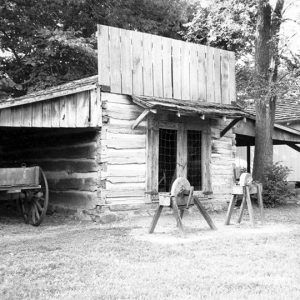 Blacksmith Shop
Blacksmith Shop 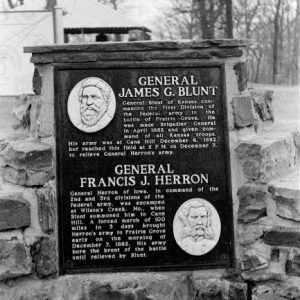 Blunt-Herron Monument
Blunt-Herron Monument  Borden House
Borden House 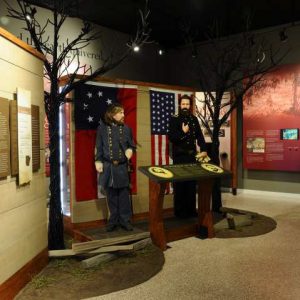 Hindman Hall Museum
Hindman Hall Museum 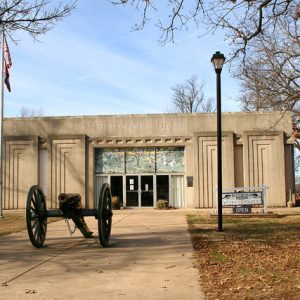 Prairie Grove Battlefield State Park
Prairie Grove Battlefield State Park 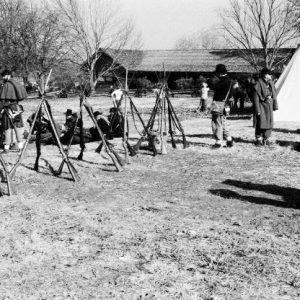 Prairie Grove Battlefield State Park
Prairie Grove Battlefield State Park 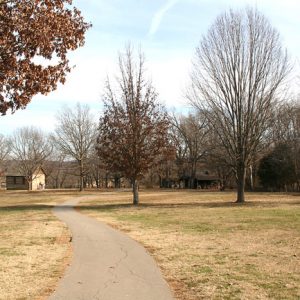 Prairie Grove Battlefield State Park
Prairie Grove Battlefield State Park 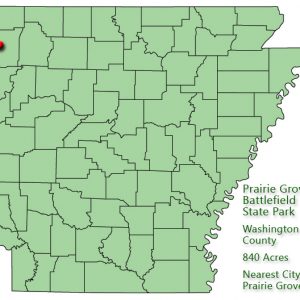 Prairie Grove Battlefield State Park: Park Location
Prairie Grove Battlefield State Park: Park Location 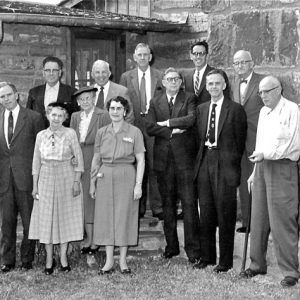 Prairie Grove Battlefield Memorial Foundation
Prairie Grove Battlefield Memorial Foundation 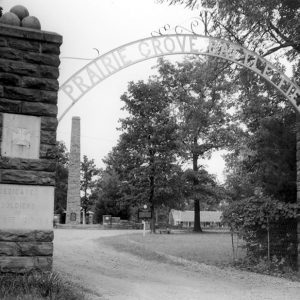 Prairie Grove Entrance
Prairie Grove Entrance 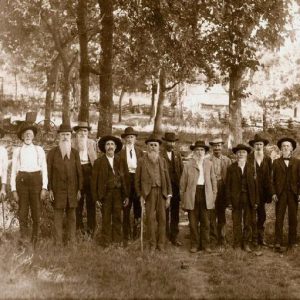 Thirty-Fourth Arkansas Infantry Reunion
Thirty-Fourth Arkansas Infantry Reunion 



Comments
No comments on this entry yet.